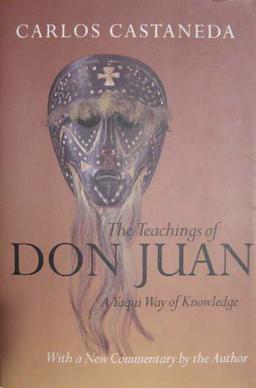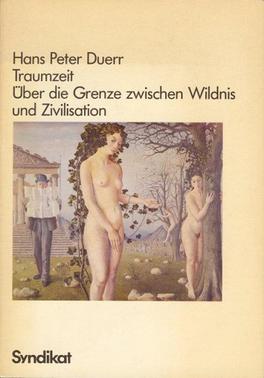
Shamanism or Samanism is a religious practice that involves a practitioner interacting with the spirit world through altered states of consciousness, such as trance. The goal of this is usually to direct spirits or spiritual energies into the physical world for the purpose of healing, divination, or to aid human beings in some other way.

Carlos Castañeda was an American writer. Starting with The Teachings of Don Juan in 1968, Castaneda wrote a series of books that purport to describe training in shamanism that he received under the tutelage of a Yaqui "Man of Knowledge" named don Juan Matus.
Miguel Ángel Ruiz Macías, better known as Don Miguel Ruiz, is a Mexican author of Toltec spiritual and neoshamanistic texts.

Robert Gordon Wasson was an American author, ethnomycologist, and a Vice President for Public Relations at J.P. Morgan & Co.
Richard de Mille was an American author.
Víctor Sánchez is a Mexican author. He was initially inspired by the writings of Carlos Castaneda and by his own studies among the Wirrarika, said to be cultural descendants of the Pre-Columbian Native American Toltecs.
Neoshamanism refers to new forms of shamanism. It usually means shamanism practiced by Western people as a type of New Age spirituality, without a connection to traditional shamanic societies. It is sometimes also used for modern shamanic rituals and practices which, although they have some connection to the traditional societies in which they originated, have been adapted somehow to modern circumstances. This can include "shamanic" rituals performed as an exhibition, either on stage or for shamanic tourism, as well as modern derivations of traditional systems that incorporate new technology and worldviews.

Mayanism is a non-codified eclectic collection of New Age beliefs, influenced in part by Pre-Columbian Maya mythology and some folk beliefs of the modern Maya peoples.
Plastic shaman, or plastic medicine people, is a pejorative colloquialism applied to individuals who are attempting to pass themselves off as shamans, holy people, or other traditional spiritual leaders, but who have no genuine connection to the traditions or cultures they claim to represent. In some cases, the "plastic shaman" may have some genuine cultural connection, but is seen to be exploiting that knowledge for ego, power, or money.
Toltecayotl is a Nahuatl word derived from "tōltēcātl" which as used by the Nahuas to refer to the members of the Toltec civilization that preceded them in the basin of Mexico, as well as a generalized meaning of "artisan".

The Art of Dreaming is a 1993 book by the anthropologist Carlos Castaneda. It details events and techniques during a period of the author's apprenticeship with the Yaqui Indian sorcerer, don Juan Matus, between 1960 and 1973.

The Teachings of Don Juan: A Yaqui Way of Knowledge was published by the University of California Press in 1968 as a work of anthropology, though it is now widely considered a work of fiction. It was written by Carlos Castaneda and submitted as his Master's thesis in the school of Anthropology. It purports to document the events that took place during an apprenticeship with a self-proclaimed Yaqui Indian Sorcerer, don Juan Matus from Sonora, Mexico between 1960 and 1965.
Cabeza de Vaca is a 1991 Mexican film about the adventures of Álvar Núñez Cabeza de Vaca, an early Spanish explorer, as he traversed what later became the American South. He was one of four survivors of the Narváez expedition and shipwreck. He became known as a shaman among the Native American tribes he encountered, which helped him survive. His journey of a number of years began in 1528. After his return to Spain, he published his journal in 1542. The screenplay by Guillermo Sheridan and Nicolás Echevarría is based on this journal.

A Separate Reality: Further Conversations With Don Juan is a book written by anthropologist/author Carlos Castaneda, published in 1971, concerning the events that took place during his apprenticeship with a Yaqui Indian Sorcerer, Don Juan Matus, between 1960 and 1965.
Florinda Donner is an American writer and anthropologist known as one of Carlos Castaneda's "witches".
Taisha Abelar, born Maryann Simko, was an American writer and anthropologist who was an associate of Carlos Castaneda.
Roger T. Hane was an illustrator of paperback books, commercial advertising campaigns, and record albums, known for his surreal, fanciful art. During his eleven-year professional career, Hane produced over three hundred illustrations. He painted the covers of the Collier-Macmillan editions of C.S. Lewis's Chronicles of Narnia books, as well as such Simon & Schuster publications as Carlos Castaneda's The Teachings of Don Juan and A Separate Reality. He also created artwork for Avon Books, E.P. Dutton Company, and Collier Books.
The spirit spouse is a widespread element of shamanism, distributed through all continents and at all cultural levels. Often, these spirit husbands/wives are seen as the primary helping spirits of the shaman, who assist them in their work, and help them gain power in the world of spirit. The relationships shamans have with their spirit spouses may be expressed in romantic, sexual, or purely symbolic ways, and may include gender transformation as a part of correctly pairing with their "spouse". Shamans report engaging with their spirit spouses through dreams, trance, and other ritual elements. In some cultures, gaining a spirit spouse is a necessary and expected part of initiation into becoming a shaman. Examples of spirit spouses may be seen in non-shamanic cultures as well, including dreams about Jesus Christ by nuns, who are considered to be "brides of Christ".

The Ah-Ha Phenomenon is a radio drama, produced by the ZBS Foundation. Released in 1977 this is the third of the Jack Flanders adventure series, and combines elements of Americana and Old-time radio with metaphysical concepts such as Sufi wisdom and Tibetan Buddhism.

Dreamtime: Concerning the Boundary between Wilderness and Civilization is an anthropological and philosophical study of the altered states of consciousness found in shamanism and European witchcraft written by German anthropologist Hans Peter Duerr. First published in 1978 by Syndikat Autoren-und Verlagsgesellschaft under the German title of Traumzeit: Über die Grenze zwischen Wildnis und Zivilisation, it was translated into English by the Hungarian-American anthropologist Felicitas Goodman and published by Basil Blackwell in 1985.







